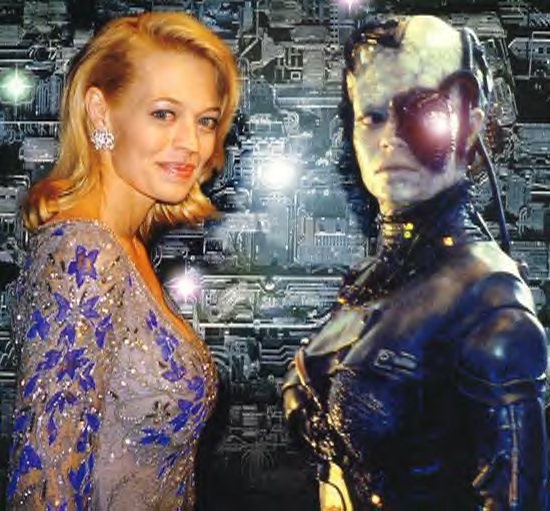How I Became Posthuman

When I was 15 living in Masterton, home of the Golden Shears, my very clever brother wrote me that he was building a brain. He called it his little black box. He had received funding from the Golden Kiwi (this pre-dates the Lottery) so I took that endorsement to mean it was entirely possible to build an intelligent machine. note 1
In any case it came to no surprise to me when I read that Sandy Stone had fallen in love with her own prosthesis (p3 The War of Desire and Technology at the Close of the Mechanical Age). I believe that when I accepted the notion of a little black box containing a brain, I had conducted my own Turing test and concluded an intelligent machine was entirely feasible. Perhaps this acceptance of the intelligent machine made it easier for me to accept (be assimilated into?) a posthuman condition.
This essay outlines what the posthuman condition involves and covers some of the suggestions as to how this and related cyborg theory evolved. That gets the academic stuff out of the way and reassures my professor that I did indeed tackle the reading list and did not just spend the length of the course engaged in on line chat with AOL buddies who would crash my internet space uninvited.
The second part of this essay looks at how a virtual identity, possibly a cyborg, was created. This is my experience of belonging to an on-line discussion group which, I think, created an electronic version of author Douglas Coupland. An electronic identity quite separate from what the Canadian author Douglas Coupland probably regards as his "core" identity.This process of turning Douglas Coupland into a virtual entity was aided by Coupland himself who has his own web page and charts his book promotion tours in on-line diaries. Fred Bernstein reviewing Miss Wyoming, concluded that Coupland, as revealed on his website, was more interesting than his characters. I believe at some point the discussion group ceased discussion about Douglas Coupland the author and his texts. We adopted an entity which was similar to Coupland, as revealed on his website. An e-Doug if you like, cyber-Doug.
This was the initial essay plan, however, in February/March Coupland embarked on a literary tour in the UK which meant that I had a chance to see Coupland in the physical world. This corresponded with several members from the electronic discussion group deciding to make a pilgrimage from several international locations to see Douglas Coupland at a London reading.
This physical meeting, the reconciliation of virtual
and physical bodies, however it can be described, was significant.
We (the discussion group as well as Coupland) were humanised, or experienced
a similar process to whatever Captain Janeway did to Seven
of Nine to get all that metal off her face. I realised perhaps
the original plan to focus on cyber-Doug was ignoring my own transformation,
the blurring of my own boundaries. Perhaps the moment the cyber-Doug
and the cyber-Dougophiles met was a post posthuman moment?
Next - The Posthuman Condition

Dr Jeff's student thesis was titled Models of Alcoholism in New Zealand Society. It strikes me that his early interest in modified humans, would lead quite naturally to an interest in humanising machines.
Since then he had gone on to various other types
of research in neurological anatomy and has rarely referred to the little
black box again. Recently I asked him whatever happened to it and
he denied its existence.
But
perhaps he simply upgraded to a computer simulation?